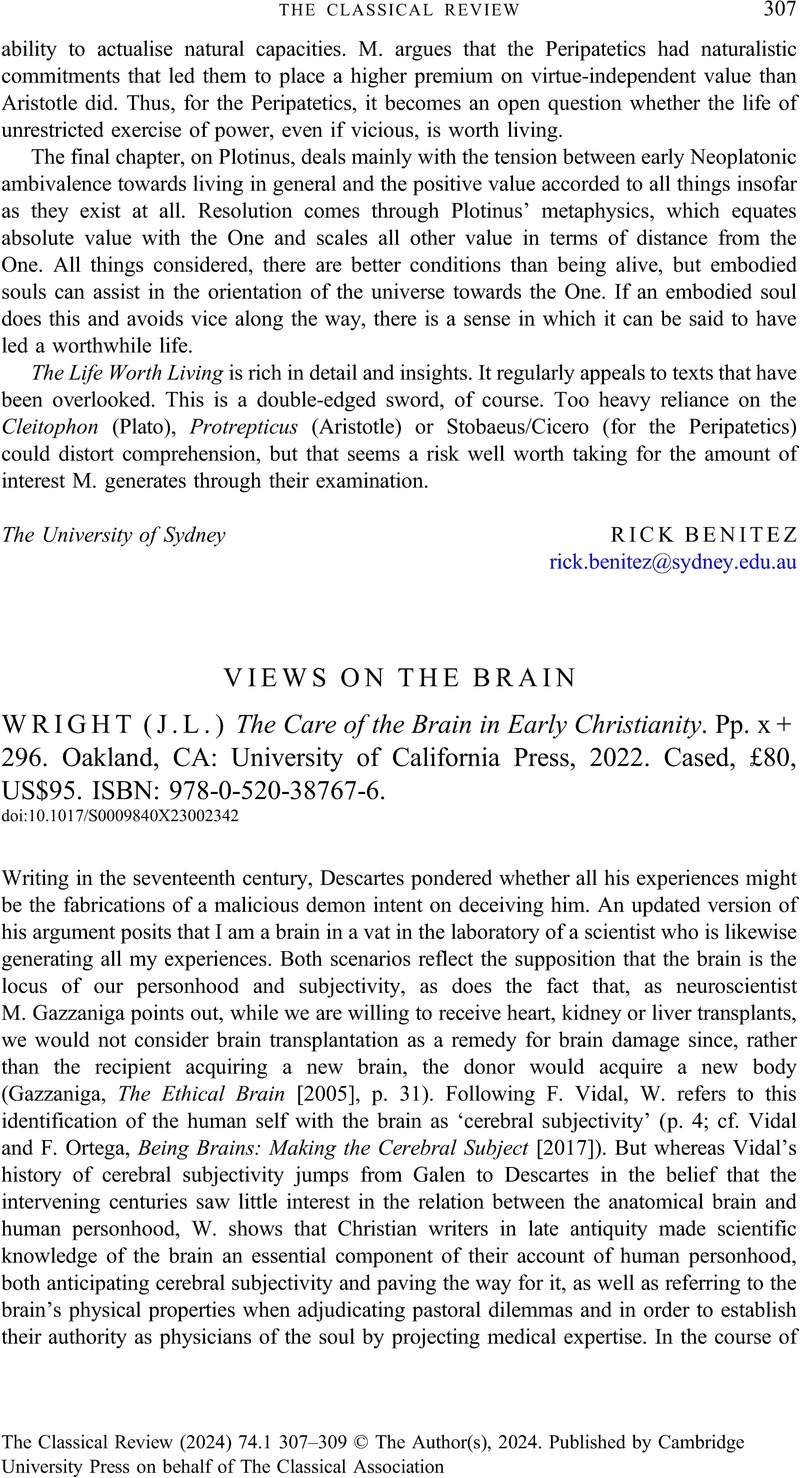No CrossRef data available.
Article contents
VIEWS ON THE BRAIN - (J.L.) WRIGHT The Care of the Brain in Early Christianity. Pp. x + 296. Oakland, CA: University of California Press, 2022. Cased, £80, US$95. ISBN: 978-0-520-38767-6.
Review products
(J.L.) WRIGHT The Care of the Brain in Early Christianity. Pp. x + 296. Oakland, CA: University of California Press, 2022. Cased, £80, US$95. ISBN: 978-0-520-38767-6.
Published online by Cambridge University Press: 12 January 2024
Abstract
An abstract is not available for this content so a preview has been provided. Please use the Get access link above for information on how to access this content.

- Type
- Reviews
- Information
- Copyright
- Copyright © The Author(s), 2024. Published by Cambridge University Press on behalf of The Classical Association



